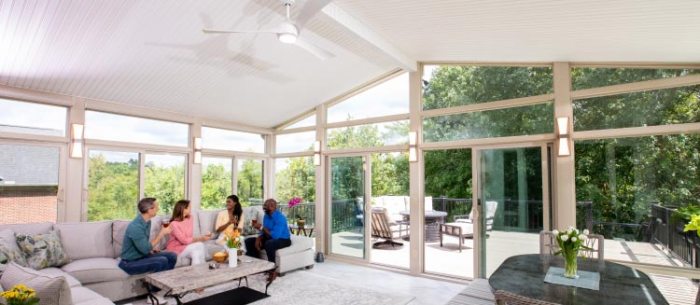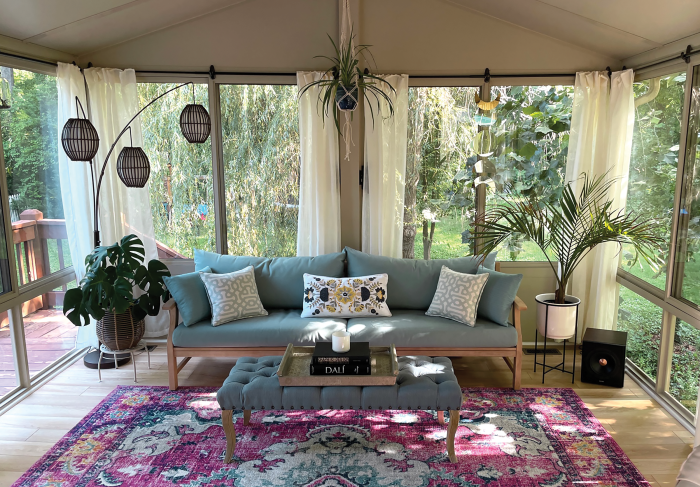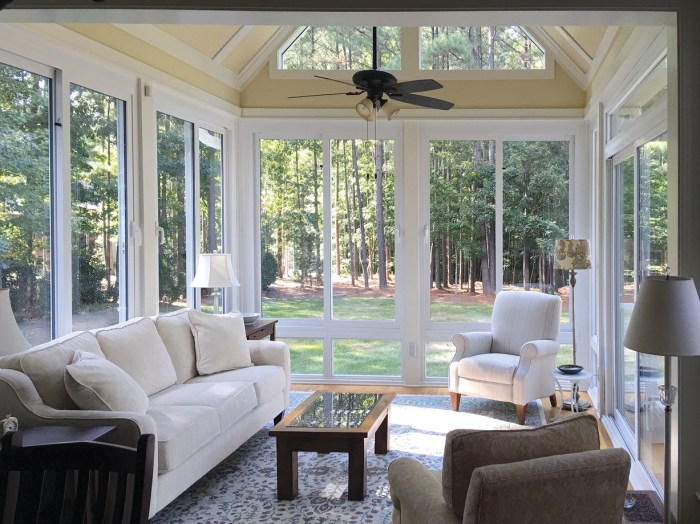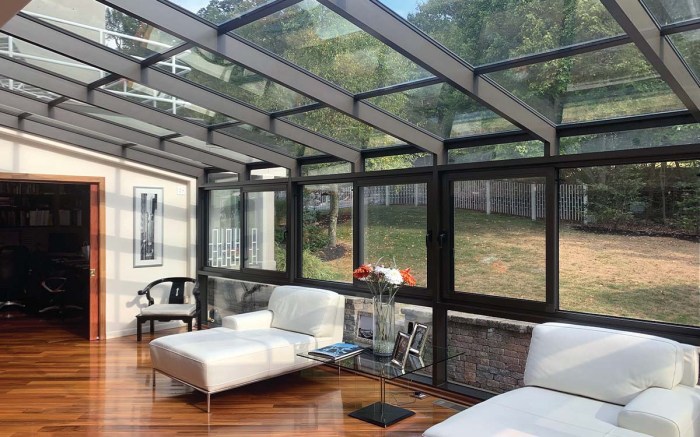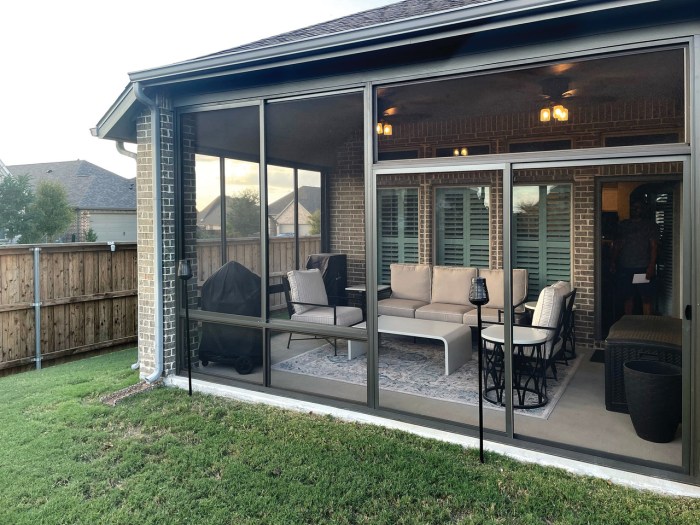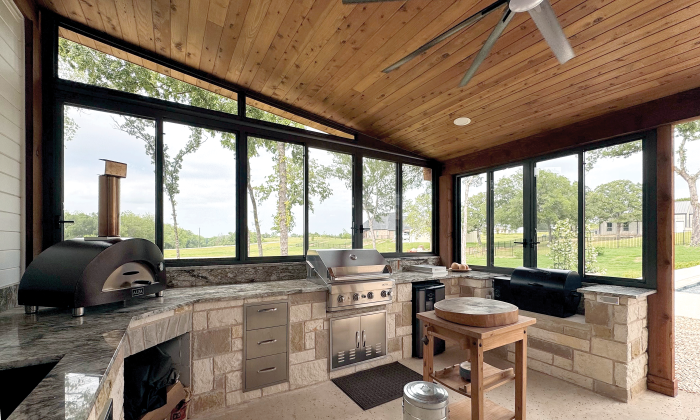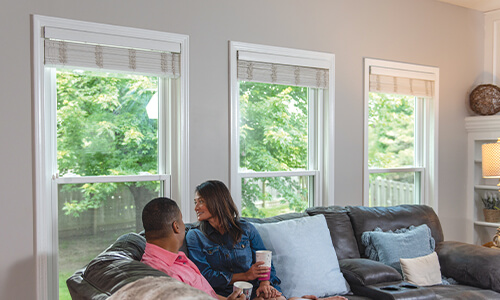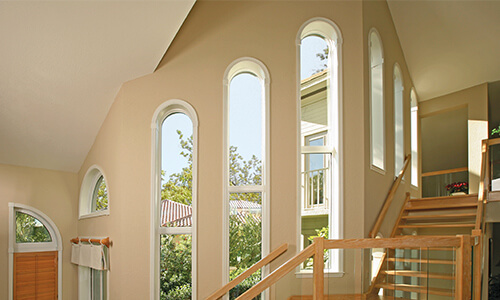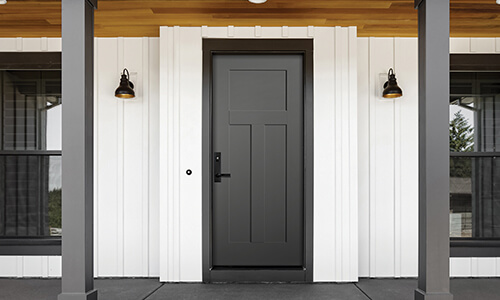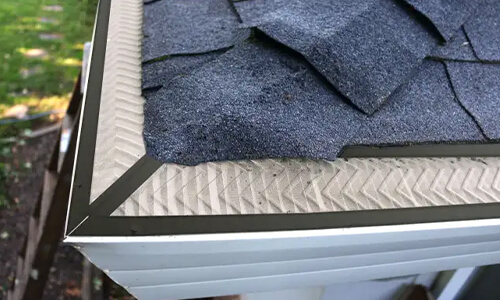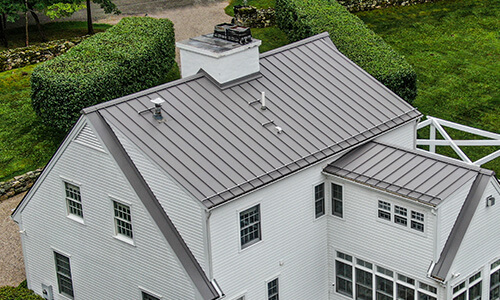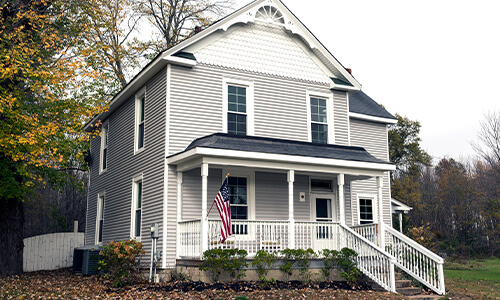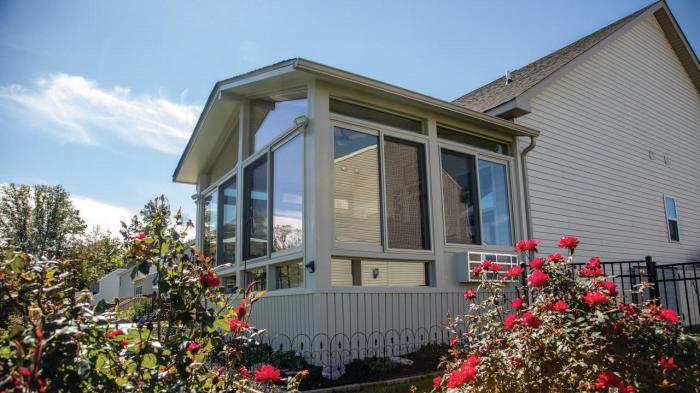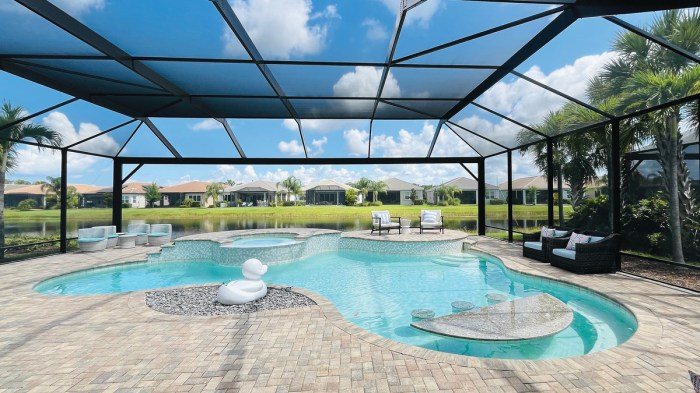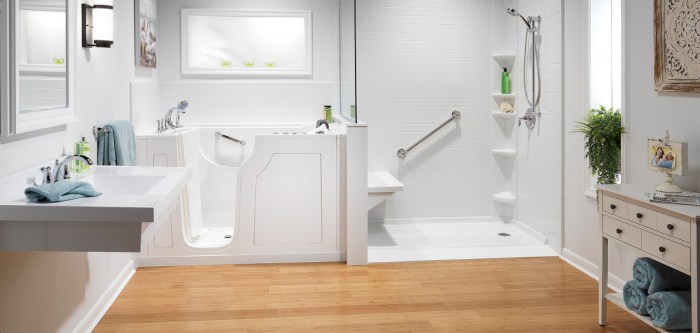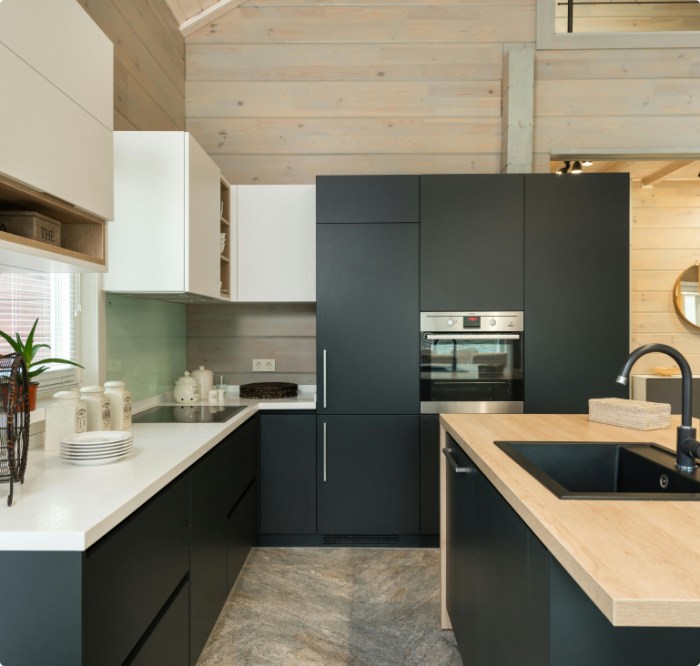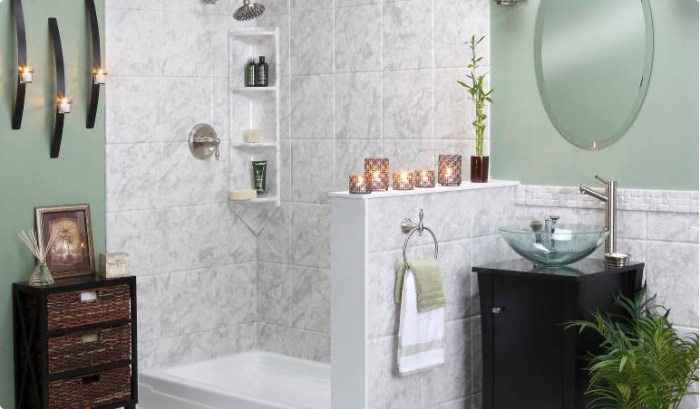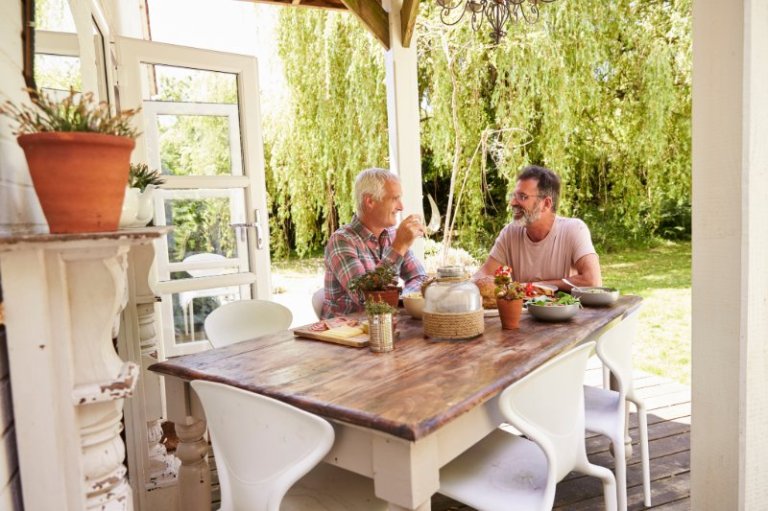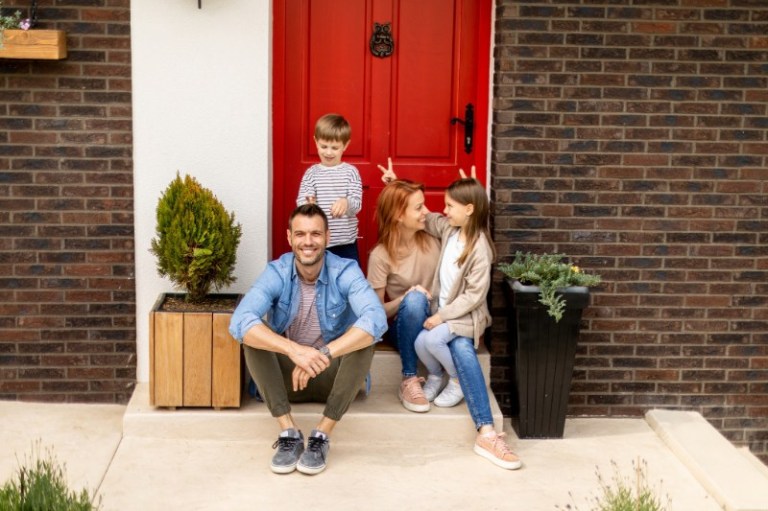According to a 2024 study by U.S. News and World Report, 94% of older Americans want to age in place, rather than move to a more accessible home. Yet many find their homes don’t serve them well as they age. Two-story living, lack of shower stalls, and narrow corridors are just a few obstacles that seniors face in their current homes.
In this article, we answer common homeowner questions about the importance of readying a home for you or your loved one’s senior years, as well as tactical advice for making it happen.
Why Aging in Place Renovations Matter
The U.S. Census Bureau projects the population of Americans aged 65 and older to grow by almost 30% over the next 25 years. Yet, the availability of senior housing is not keeping up. Senior Housing News reports that for every 27 senior housing units currently occupied, only 10 new ones are being built. This gap highlights the growing importance of making existing homes safer and more suitable for aging in place.
Planning Ahead for Safety & Comfort
Homeowners who plan for aging in place are better prepared for an emergency. Falls are the leading cause of injury among older adults. And when they happen, injured homeowners without single-level living, zero-entry showers, or accessible doorways are often forced to spend time in a rehab facility.
By planning early, you can make thoughtful, cost-effective decisions before a health crisis or your mobility declines. You can select solutions that fit your current and future needs with less stress. And, you can make incremental improvements as funds allow. Thereby saving money and minimizing the disruption to your life.
Renovation vs. Relocation: The Value Comparison
The value of renovating your home instead of relocating goes beyond financial considerations. Emotional ties, lifestyle preferences, and future maintenance all play a role in the decision. If you’re working with a design remodeler or a home improvement company like Great Day Improvements their designers can help you make this important life decision. When having this discussion, here are key factors to keep in mind.
| Factor | Aging in Place Renovations | Relocation to Accessible Home |
| Cost | Usually less, depending on the home’s floor plan | Higher–including sale, purchase, relocation costs, and fees |
| Customization | Renovations the way you want | You may have to compromise on what you want in a home |
| Emotional Impact | You remain in a familiar home, maintaining community ties | You start over–new house, new neighbors, new community |
| Ongoing Maintenance | An older home may continue to need upgrades | A new home requires less maintenance |
| Resale Value | Renovations can increase resale value | Depends on the home’s features and location |
High-Impact Renovations for Aging in Place
Key areas to consider for home renovations for seniors include the bathroom, kitchen, and doorways or corridors. Though, even small upgrades, such as lighting or flooring changes, can significantly improve day-to-day living.
Bathroom Updates for Safety & Accessibility
Improving senior bathroom safety is a top priority for most aging in place specialists. Accessible bathroom remodeling can cost up to $40,750, depending on location and project scope, according to Zonda’s 2024 Cost vs. Value Report. For the report, contractors upgraded a bathroom to universal design by including the following renovations, creating a fully wheelchair accessible space. This remodel brings a 49% ROI at resale. You could lower your cost, and raise your return on investment, by eliminating some of these features.
- Made the 5×7-foot space wheelchair accessible with a zero-threshold 36-inch-wide door.
- Installed flat-panel electrical switches at sitting level.
- Replaced the toilet with a comfort-height model with an elongated bowl and bidet-type seat.
- Replaced the bathtub with a curbless, tiled shower with adjustable showerhead, fold-out seat, and glass door.
- Installed electric radiant heat under new LVT flooring.
- Installed an accessible vanity and adjustable mirror.
- Replaced all lighting with LED and special features.
- New ceramic tile on the walls.
- Installed nine heavy-duty towel bars and reconfigured storage.
Kitchen Improvements for Ease of Use
According to the home improvement website Fixr.com, renovating a kitchen to age in place can cost between $8,000 and $50,000, depending on project scope and location. A kitchen specialist with Great Day can help you tailor your budget to meet your needs. Common improvements to a kitchen could include:
- Replacing windows above the sink with casement style
- Installing shallow sinks to reduce bending requirements
- Swapping handles and faucets for lever-style
- Replacing lower cabinets with pull-out drawers for storage
- Installing non-slip flooring
- Replacing counters to adjust for height needs
- Widening doorways
Smart Lighting, Flooring, & Navigation Enhancements
Enhanced lighting reduces the risk of falls. Installing motion sensor lights that illuminate hallways and stairways provides a measure of safety when you have to get up in the middle of the night. Toe-kick lighting in the kitchen highlights the floor and potential tripping hazards. Converting all lighting to brighter LED helps older homeowners see better—plus it has energy efficiency benefits!
Replacing Gutters for Safety
Since falls are the most common cause of injury for older people, and cleaning gutters involves climbing on ladders, replacing them creates a safer home for your senior years. A one-piece gutter design prevents debris from clogging the gutters. And installing a gutter protection system that repels leaves and debris adds a second layer of protection. Once installed, climbing ladders to clean the gutters is a thing of the past.
Non-slip flooring installation also reduces the risk of falls. Consider this enhancement for areas near water such as the kitchen, bathroom, and entryway.
Doorways, Entryways, & Mobility Upgrades
To enhance mobility in an older home, consider the following upgrades:
- Widening doorways to 36 inches to accommodate wheelchairs and walkers.
- Install ramps, if needed, for elevated homes where stairs lead to the entryway.
- If adding a first-floor owner’s suite is prohibitive, install a stair lift.
Renovations That Add Long-Term Resale Value
When planning any home renovation project, it’s only natural to wonder if it will improve the resale value of your home.
The Appeal of Universal Design
Universal Design includes features that makes a home accessible to all people without limitations. Features like wide doorways and corridors, natural lighting, single-level living, and zero-entry thresholds increase the buyer appeal if you decide to sell in the future.
Balancing Aesthetics & Function
When making improvements, strive to keep the home’s aesthetics in mind. Living in a house that resembles a rehab facility loses its comfort and appeal. In turn, you lose your joy. Work with a professional designer or certified aging-in-place specialist (CAPS) to help balance beauty and function.
See how we’ve helped other homeowners create stylish, accessible spaces—browse our project gallery.
Common Mistakes to Avoid When Renovating for Seniors
Believe it or not, not all home improvements are a great idea, especially when remodeling for accessibility.
Mistake #1: Insisting On a Full Room Remodel
Full room remodels are rarely necessary and can be modified with targeted improvements that get the job done. For instance, before gutting the entire bathroom, consider changing the tub for a zero-entry shower and adding grab bars. If performing a few optimizations is enough, you could save tens of thousands of dollars.
Mistake #2: Ignoring Structural Issues
Don’t force renovations on a home that’s not structurally sound. If the house requires extensive work in addition to accessible upgrades, it may be wiser to look for a new home in better condition.
Mistake #3: Not Considering the Resale Market
Similarly, extensive and expensive improvements, such as a first-floor owner suite, may price the house out of the market. According to the Cost vs. Value Report, such an addition returns a paltry 24% to 36% return on investment.
Mistake #4: Neglecting Room Transitions
Since falls are prevalent for older people, ignoring flooring transitions creates tripping hazards. When remodeling, ensure the home has level surfaces throughout. Also, address any areas with poor lighting.
A specialist with Great Day can help you avoid these costly mistakes and advise you on the best strategy to suit your needs.
How to Get Started with an Aging in Place Remodel
You cannot begin too early to ready your home for your senior years. Early planning gives you plenty of time to consider not only what you will do to the house, but also if the house and neighborhood are right for you.
Choosing the Right Partner for the Job
Once you make the decision to remain in place, hire a CAPS professional to assess your home and recommend modifications based on your needs. To find a CAPS near you, visit the National Association of Home Builders website.
Budgeting & Prioritizing Updates
Once you have an assessment in hand, begin your improvements in high-risk areas like the bathrooms and stairways. Then add modifications to accommodate any potential changes in your health and mobility as your budget allows.
Final Thoughts: Safe, Stylish, & Smart Home Improvements for the Future
Preparing your home for aging in place is an investment in safety, comfort, and future resale value. Small, strategic updates today can prevent costly, hurried changes tomorrow while adding value and peace of mind.
Ready to start planning a safer, more valuable future at home? Request your free quote today.
Frequently Asked Questions
What are aging in place renovations?
Aging in place renovations are home updates designed to support safe, independent living for homeowners as they age. These improvements typically include features like walk-in showers, wider doorways, and non-slip flooring—enhancing both safety and daily functionality.
What is the difference between aging in place and a continuing care retirement community?
You can age in place anywhere you live. But in a continuing care retirement community (CCRC), you have a built-in community of neighbors and friends who watch out for and care for one another. You also have peace of mind that as your needs change, so does your plan.
What are the advantages of aging in place?
Aging in place allows homeowners to stay in the comfort of their own home while maintaining independence, safety, and quality of life. It’s a smart choice for middle-aged homeowners planning ahead, helping reduce future moving costs, support multigenerational living, and preserve emotional ties to their home. It also enables better control over daily routines and care.
What are the disadvantages of aging in place?
While aging in place offers comfort and independence, it may come with some limitations. Older homes might require significant modifications to meet accessibility standards, and maintenance responsibilities still fall on the homeowner. Without proper planning or expert support, homeowners could face costly updates later. That’s why partnering with a trusted, full-service team—like Great Day Improvements—is essential for making smart, sustainable choices from the start.
How do aging in place upgrades add value to a home?
These renovations not only improve day-to-day comfort, but they also increase a home’s long-term marketability. Buyers—especially those planning for multigenerational living—often look for homes with accessible layouts, energy-efficient upgrades, and smart safety features.
Can aging in place renovations be customized to match my home’s style?
Yes—function doesn’t have to sacrifice form. At Great Day Improvements, we design every remodel with your style, goals, and comfort in mind. Expect expert craftsmanship and aesthetics that feel like home.
Who should I trust to handle aging in place remodeling?
Look for a partner who offers custom solutions, local expertise, and total accountability. Great Day Improvements does it all—design, build, install—with one team and one process. That’s remodeling with confidence.






















